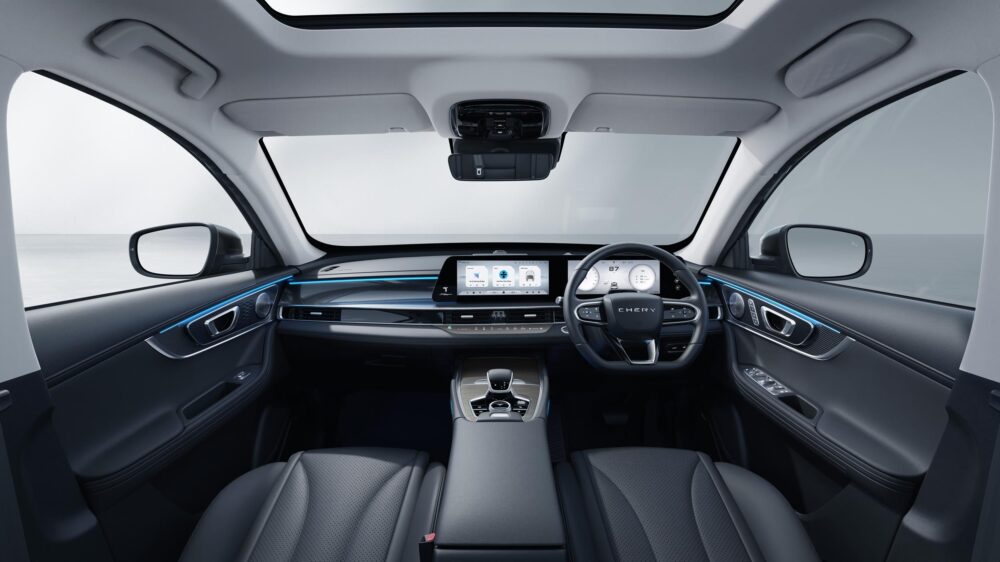The Chery Tiggo 7 CSH
In 2023, I purchased a 2022 Chery Tiggo 7 Pro.
I was fascinated by the technology and features offered in a car costing under R500 000, and the warranty and service plan made it an easy choice for me.
Of course, I knew that it wouldn’t feel like driving a German brand, but I needed an affordable car that offered space, comfort and technology, and it ticked all the boxes.
The only thing I wasn’t a fan of was the CVT gearbox paired with the 1.5-litre turbocharged engine. The drive is smooth, but when you really need the engine’s power, you get an uncomfortable drag.
Of course, I also needed to watch my fuel consumption. In the three years I’ve had the car, my fuel consumption has always been around 8 litres/100km, which is not bad, but when I do a lot of urban driving, that is when I see a ridiculous amount of consumption.
However, it has been comfortable and practical since I bought it.
But this year, Chery has expanded its vehicle range to include hybrid models. The Tiggo 7 Pro range has received a plug-in hybrid electric vehicle (PHEV), and I’ve been behind the wheel of one for the past month.
At first, I wanted an extended test on this vehicle to understand just how much money I could save on running costs — and I will get to that in the next diary entry — but what shocked me more is just how far Chery has come with the product in just three years.
There’s not much that’s changed on the exterior of the vehicle, except for the lightbar at the back, which now looks way more aggressive. On the inside, it’s an entirely different vehicle.
Firstly, the seats have been replaced with way more comfortable bucket seats. The infotainment system and digital driver display have been changed as well. It is now a dual-screen display and is much more responsive.
The centre console has also been drastically changed to align it more with the Tiggo 8 and move it further away from the Tiggo 4.
While that is aesthetically pleasing, it does take away some practicality. The old Tiggo 7’s climate control panel was situated above the gear but far below the infotainment screen. In the PHEV, it is located just below the infotainment screen, so you can sometimes press buttons there unintentionally while navigating the infotainment screen.
The addition of different fragrances to the car is also something very elegant and amazing. There are a bunch of fragrances to choose from to keep the cabin fresh.
 Posh: The Chery Tiggo 7 CSH interior
Posh: The Chery Tiggo 7 CSH interior
It just feels extremely serene and much more classy compared to the 2022 version.
But the biggest and best improvement with the Tiggo 7 PHEV has to be Chery’s Super Hybrid technology and the drivetrain.
As mentioned before, the 2022 version has a 1.5-litre turbocharged engine that delivers 108kW of power and 210Nm of torque. The turbo lag is also noticeable. While it doesn’t mean that it is an uncomfortable drive, it does mean that you will have some uncomfortable moments.
But with the PHEV, so much has changed. In fact, you would never say that you are driving the same vehicle.
It has a 1.5-litre turbocharged engine, combined with dual electric motors powered by an 18.3kWh battery. It is paired to a Dual-Mode Hybrid Transmission (DHT).
The combined power output is 255kW and 530Nm of torque, and it has an electric-only range of 90km. The combined range is claimed to be up to 1200km.
That is a hell of a lot more power than the petrol version, and thanks to the electric motors, the issue of turbolag is eliminated, thanks to the instant torque provided by them.
But even in terms of comfort, the DHT makes such a big difference compared to the CVT gearbox that is present in the 2022 version. It is way more certain and consistent, and it just provides a smoother, easier drive.
I have also been driving this car for a month now and have charged it twice, but I have not filled a single drop of petrol, and I am still sitting with a combined range of over 600km.
The charging costs so far have been R243. Not bad to keep your car running for the month.
It’s just very interesting that in the space of three years, Chery has managed to take this model forward in such a beautiful manner, making it feel like a way more elegant and posh vehicle, while still managing to keep it affordable.
But trust me, the drive on this one doesn’t feel affordable; it’s more premium.
It is also now the cheapest PHEV in South Africa, with the Tiggo 7 CSH Plus priced at R599 900 and the Tiggo 7 CSH Ultra priced at R679 900.